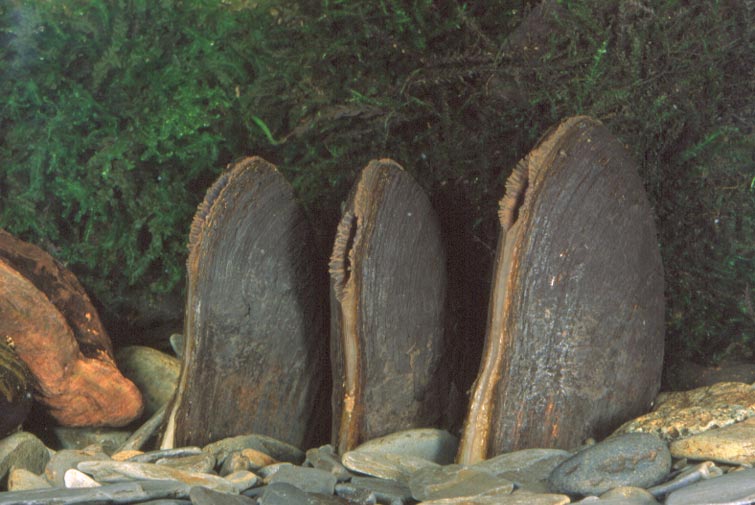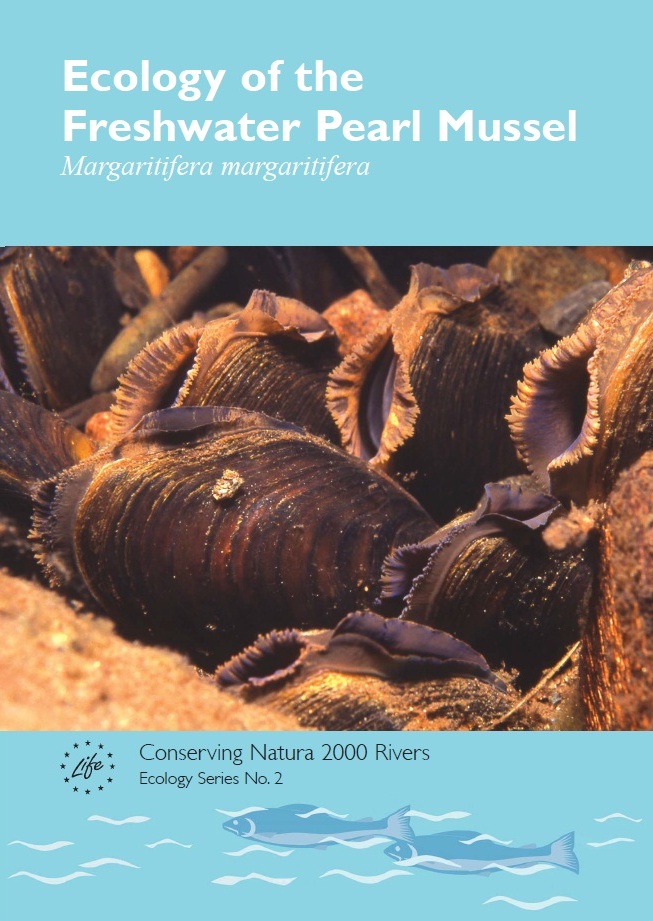Biodiversity
Related Links
- IUCN Red List
- ARKive
- Joint Nature Conservation Committee
- Life in UK Rivers: Ecology of the Freshwater Pearl Mussel
Latest News
A Starring Role for Nantclwyd’s Lesser Horseshoe Bats
22.05.2015
Living Landscape Brought Back to Life
05.12.2014
More Information
Facebook Page
Freshwater pearl mussel
The freshwater pearl mussel is a type of mollusc found in clean river systems. It is incredibly long-lived and can survive for over 120 years!
 Description and identification: The freshwater pearl mussel is a bivalve mollusc, meaning it has a shell with two halves that are hinged together. The animal itself is soft-bodied and is protected by the shell, which can be closed. In appearance the freshwater pearl mussel is similar to marine mussels, but it has a thicker shell. It measures 12-15cm in length.
Description and identification: The freshwater pearl mussel is a bivalve mollusc, meaning it has a shell with two halves that are hinged together. The animal itself is soft-bodied and is protected by the shell, which can be closed. In appearance the freshwater pearl mussel is similar to marine mussels, but it has a thicker shell. It measures 12-15cm in length.
Habitat: This species inhabits fast-flowing streams and rivers, that are well-oxygenated and unpolluted. They live partially buried in sand and gravel on the riverbed.
Diet: Like all mussels, these are filter feeders. They feed on tiny organic particles which they filter out of the water.
Ecology and reproduction: Freshwater pearl mussels have a fascinating life cycle, which depends on salmonid fish (salmon and trout). Reproduction starts when male mussels release sperm into the water in early summer, which is inhaled by females and fertilizes their eggs. When the eggs have developed they are released as tiny larvae called ‘glochidia’. Some of these glochidia are able to attach themselves to the gills of juvenile salmonids, where they develop in this oxygen-rich environment until the following spring, when they drop off and bury into the riverbed to grow into adults. It takes freshwater pearl mussels 12 years to reach sexual maturity. This curious life cycle does not appear to affect the fish adversely.
Distribution: Freshwater pearl mussels are found in parts of Europe, Russia and eastern North America. In northern and western Britain they were formally widespread. Now there is only one viable population in Wales, and one in England, however the Scottish Highlands is the last remaining stronghold for this species in Europe. In Denbighshire freshwater pearl mussels survive in the River Dee, but the population is not sustainable as the mussels aren’t reproducing.
Threats: Modification and degradation of freshwater habitats has contributed to the mussel's decline. The juveniles are particularly sensitive to reductions in water quality, which goes some way to explain why juvenile recruitment has stopped in some areas. This lack of juvenile mussels means that many populations consist of only mature individuals, and eventually local extinctions will occur as these die. Since the lifecycle of the freshwater pearl mussel is dependent on salmonids, anything that reduces salmon and trout populations will also impact upon the mussels. Historically freshwater pearl mussels were also harvested for their pearls.
Status: This species is listed as Endangered on the IUCN Red List. It is protected under UK and European law and is a priority for conservation action at a UK, Wales and Denbighshire level.




